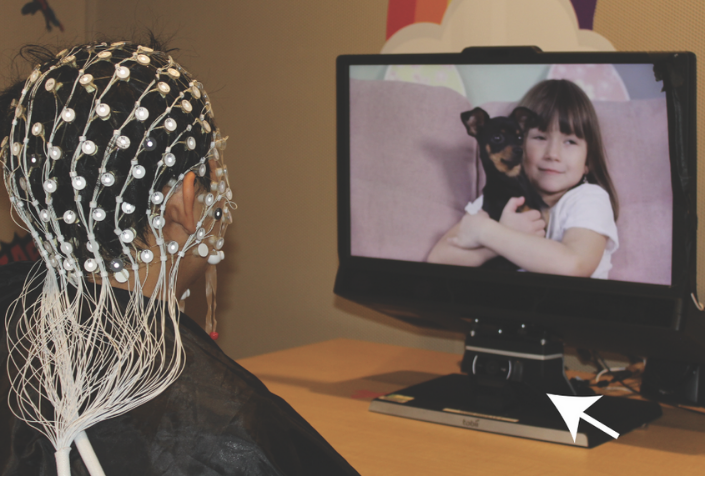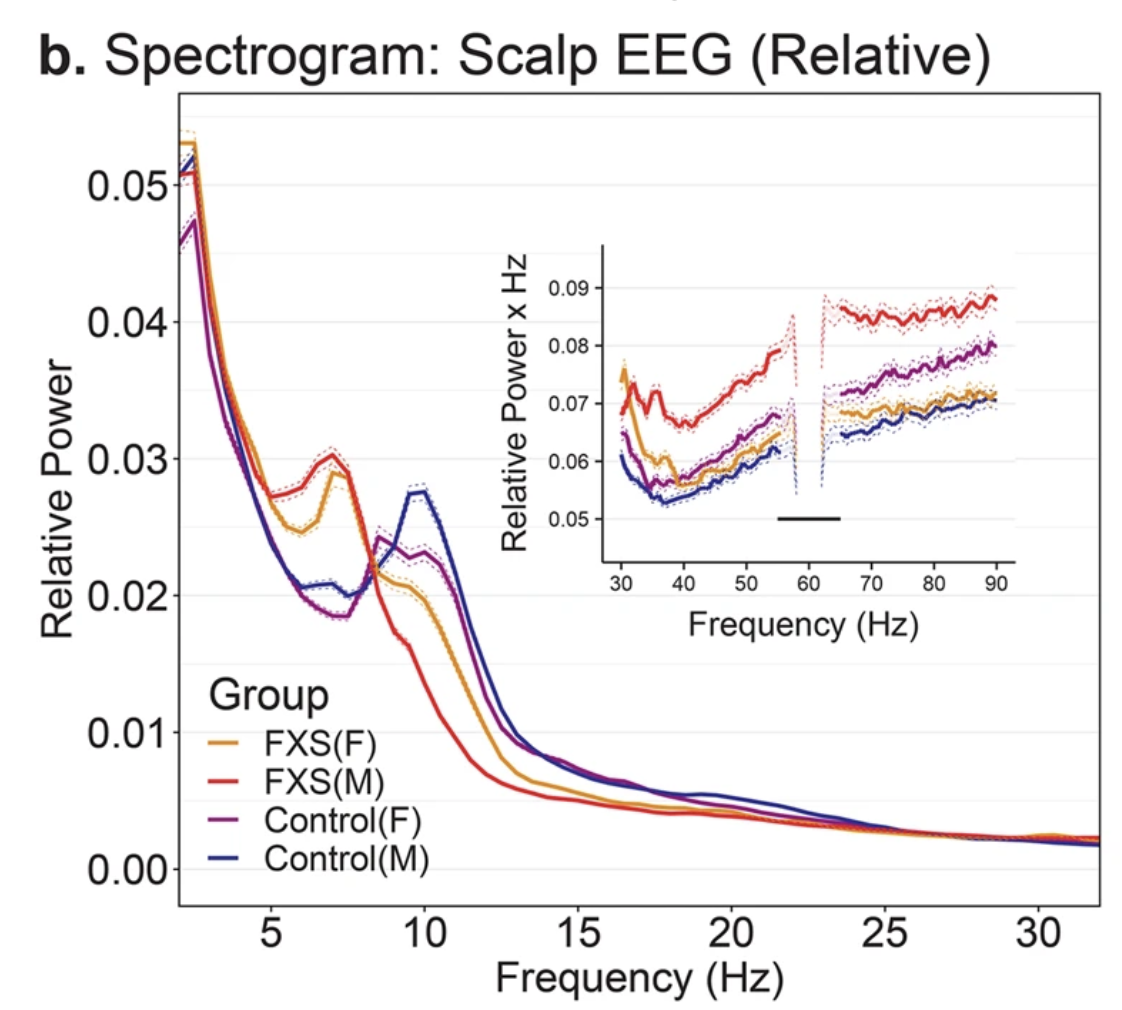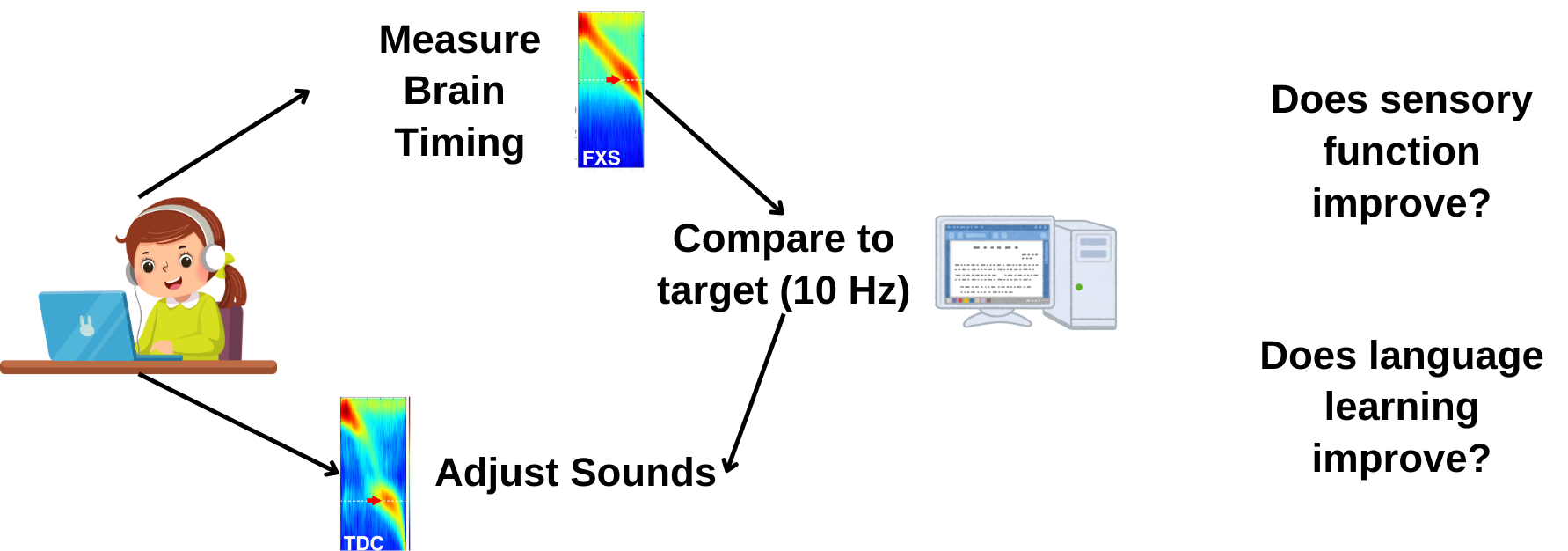Science Behind the Study

A young participant having their brain activity recorded using EEG technology
Understanding Fragile X Syndrome
Fragile X Syndrome (FXS) is one of the most common inherited causes of autism and intellectual disability. Despite years of research across multiple species and settings, developing effective treatments has remained challenging. Our study aims to address this challenge in innovative ways.
Brain Activity Patterns in Fragile X

Brain activity patterns showing differences between typical development and Fragile X Syndrome
Our research has revealed important differences in brain activity patterns between individuals with Fragile X Syndrome and typically developing individuals. The graph above shows what we call a "spectrogram" - think of it as a musical score of brain activity. In Fragile X Syndrome, we've discovered that the brain's natural rhythm (called alpha waves) tends to be slower than typical. We also see increased activity in faster brain waves (called gamma waves).
This discovery led us to develop what we call a "brain pacemaker" approach. Just like a heart pacemaker helps maintain a healthy heart rhythm, we're developing sound-based treatments that could help guide the brain back to healthier rhythms. Our goal is to gently "speed up" the slower brain waves to match more typical patterns, which may help improve attention, learning, and sensory processing.
Our Research Goals
Individual Differences
Every person with Fragile X Syndrome is unique. We're studying why individuals respond differently to various treatments, which will help us develop more personalized approaches.
Brain Response Patterns
We're particularly interested in how the brain processes sensory information and learns patterns, especially in relation to sound sensitivity, which is common in Fragile X Syndrome.
Our Innovative Approach
Our study uses advanced technology and methods including:
- Advanced brain activity analysis
- Personalized sound-based treatments
- Computer modeling of brain patterns
- Careful tracking of individual responses
What Makes Our Study Special

Our closed-loop intervention process measures brain timing and adjusts sounds in real-time
We're using a carefully designed approach called "double-blind, individualized closed-loop auditory entrainment." This innovative method works like a "brain pacemaker" - we measure each person's unique brain timing patterns and create customized sound treatments that adapt in real-time.
The process involves:
- Measuring individual brain timing patterns
- Comparing these patterns to target frequencies (around 10 Hz)
- Automatically adjusting sounds based on brain responses
- Monitoring improvements in sensory processing and language learning
This personalized approach helps us better understand how each person's brain responds to treatment, leading to more effective, individualized care approaches that may help reduce sensory sensitivities and improve learning abilities.